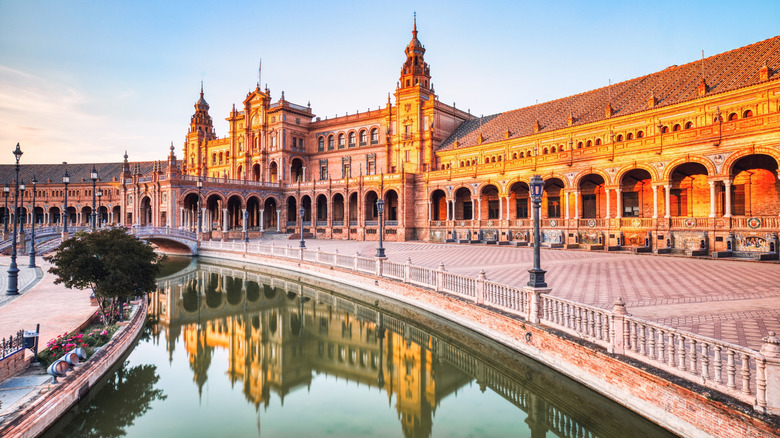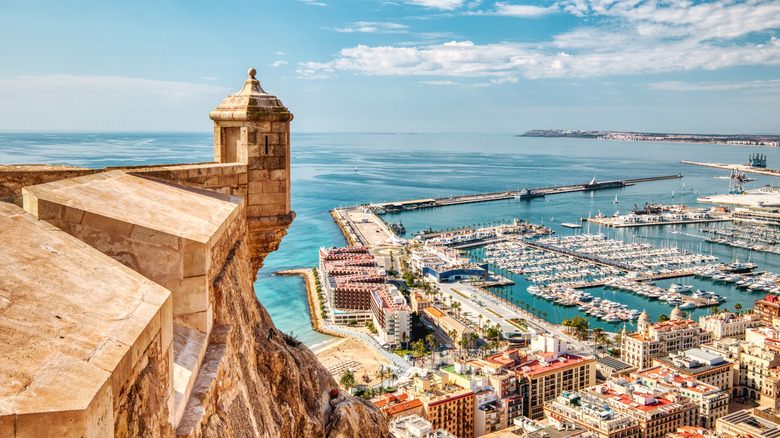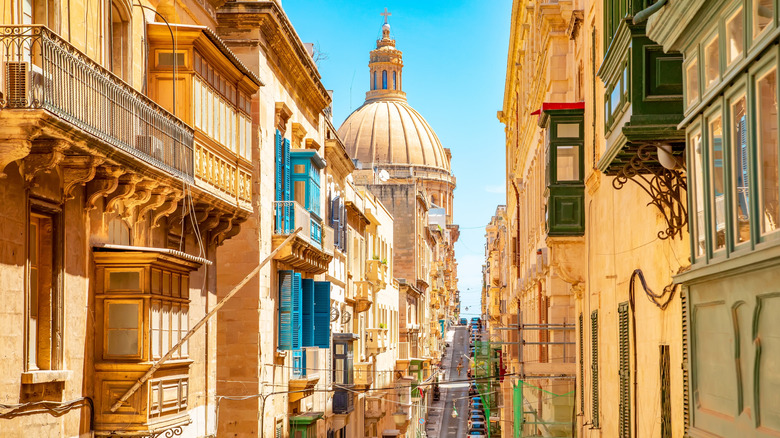The Top 3 Sunniest Countries In Europe Are A Dream For Digital Nomads And Sunshine Seekers
More and more northern "snowbirds" and remote workers are heading to Europe to soak up the sun, and it's no surprise why. The Mediterranean is a veritable hotspot, thanks to new digital nomad visas and record levels of warm weather and bright blue skies. Many European capital cities have year-round sunshine, historic sites, and colorful cultures.
In fact, a recent study by Montenegro Car Rentals looked at data from World Weather Online and TimeandDate.com to discover the top three European countries that have more than 300 days of sunshine per year. Spain, Malta, and Cyprus were in a three-way tie for first place. Spain has more than 1,000 miles of coastline along the Mediterranean (the sunniest part of the country), not including the Balearic islands, a popular warm-weather getaway. Malta and Cyprus are both island nations that have an abundance of sunshine and dry days. With this comfortable climate, affordable cost of living, and new remote work visas, many digital nomads are flocking to all three countries for a better quality of life.
Spain
It seems that everyone has Spain on their minds. The country is full of warmth, in both its weather and in its welcoming culture. Beyond big cities like Barcelona and Madrid, there are over 1,000 miles of coastline along the Mediterranean to explore. This sunny stretch is dotted with other more underrated (and livable) cities like Valencia, Malaga, and Tarifa — all of which are digital nomad hotspots. One study by vacation rental platform Holidu used research from World Weather Online to calculate the number of sunny hours per month in major European cities since 2009 and discovered that the top five sunniest cities are all in Spain. Cartagena wins the top spot with 283 hours of sunlight on average per month, followed by Alicante, Malaga, Murcia, and Granada.
This sunny European country is one of the best places to retire abroad, and it also draws droves of digital nomads. In 2023, Spain even launched its own digital nomad visa. This visa is for self-employed or freelance workers, and allows them to live and work in Spain for three years, then extend the visa for another two years (for a total of five years in the country with a temporary residency). After five years, expats can apply for permanent residency if they want to stay in the sun a little longer. The cost of living is manageable, with monthly expenses totaling around €1,700 to €2,450 (at the time of writing).
Malta
Malta is a small island nation in the heart of the Mediterranean that is another sun-drenched paradise, boasting over 300 sunny days annually. It has temperatures ranging from the low 50s in the winter to the high 80s in the summer. It's loaded with history, including the medieval Valletta capital city, where the Knights of St. John ruled around the 16th century. "Game of Thrones" fans may even recognize the ancient city of Mdina as the entrance to King's Landing. In the summer and early fall, many locals take the ferry to the smaller island of Gozo to get a tan on the less-crowded beaches.
Malta became an even more popular destination when it created its Nomad Residence Permit in 2021. This temporary visa allows non-EU remote workers to live in Malta while working for foreign companies or clients. Because Malta is one of the most densely populated countries in Europe, it can be difficult to find apartments, particularly in the popular neighborhoods like St. Julian's. But the cost of living is manageable for remote workers, with apartment leases hovering around €1,000 to €1,500 per month (at the time of writing). English and Maltese are the two official languages of Malta, making it even easier to adapt.
Cyprus
Don't overlook Cyprus for other major islands like Crete or Sicily. This nation off the coast of Türkiye has the same Mediterranean climate (think: 340 days of sun) with fewer crowds. Its arid environment, crystal-clear water, and Troodos Mountains mean there are plenty of places to explore year-round. While summer can veer on too hot (high 80s to 90s), the shoulder seasons of spring and fall offer the perfect middle ground, with average temperatures in the 70s.
If you're looking to work abroad, Cyprus has a lot going for it. It's a safe country with a low crime rate, and it's easy to find an internet connection in the main cities and tourist areas. The country is divided into the north and the south. South Cyprus is an EU member state, which means it feels more Greek (and has a Europe-worthy price tag). North Cyprus is a Turkish Republic, meaning it will not count against your 90-day tourist stay in the Schengen Zone like the South side would. The cost of living in North Cyprus is also 30 to 50 percent lower.



